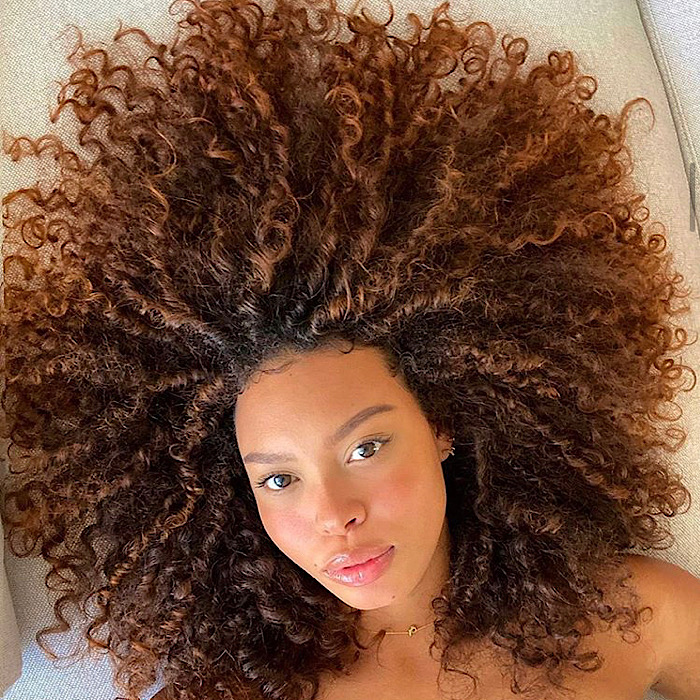
Image Source: @aureefabienne
While it’s not unusual to lose some hair, there are reasons why hair shedding happens. Yes, shedding is annoying, but completely normal. What is your shedding hair trying to tell you? For clarity, there is a difference between hair loss and hair shedding. We’re going to delve into some reasons why your hair sheds and discuss solutions.
What’s the difference between hair loss and hair shedding?
Hair loss occurs when something stops hairs from growing, which is a condition known as anagen effluvium. If you’re experiencing excessive hair loss (over 100 strands per day for several weeks) or even bald patches, there can also be hidden underlying reasons why you may be experiencing serious hair loss, and it would be best to seek professional medical help.
Hair shedding is a normal part of the life cycle of your hair, which has phases where it grows, rests, then sheds. The average number of hair strands a person loses is approximately 50-100 hairs per day. There are several reasons as to why your hair might be shedding, such as chemical processing, over styling with heat tools, using tight hair ties to tie your hair up, stress, changes in seasons, lack of nutrients, pregnancy, birth, and change in hormones.
It is important to note that because people with curly hair often go days between washing and detangling hair, the shed hair can appear greater when we do wash. Remember this may be multiple days’ worth of shed hair.
Common causes of hair loss include:
- Androgenetic alopecia
- Alopecia areata
- Traction alopecia
- Medication
- Nutritional Deficiencies
- Birth control pills
- Ringworm
- Hereditary hair loss
- Age
- Childbirth, illness, or other stressors
- Hair care (i.e. chemical processing)
- Hairstyle pulls on your scalp
- Hormonal imbalance
- Scalp infection/conditions
- Poison
How to treat hair loss
Hair loss may require medical treatment. A board-certified dermatologist can tell you what to expect and prescribe a treatment plan if necessary. The sooner treatment begins, the better the prognosis.
In order to distinguish the difference between hair loss and hair shedding – seek a professional. Dermatologists specialize in diagnosing and treating hair, and they can determine whether you are experiencing hair loss or hair shedding (sometimes it’s both).
How to stop hair shedding
In order to figure out a remedy for hair shedding, start by getting to the root of the issue. First, make sure that the amount of hair you are shedding is the normal amount. As I mentioned earlier, a dermatologist can help you determine whether you have hair loss or hair shedding.
One way to be proactive in your regimen is to take hair vitamins to strengthen your hair. Biotin for example can be bought at any drug store and is incredibly effective in helping to strengthen your hair and help it grow. Another vitamin that can help with hair shedding is Vitamin A. This vitamin has retinoids which increases hair growth and even assists with sebum production, keeping your scalp and hair moisturized. A multivitamin is also important to provide all of the nutrients you will need to help your hair grow healthy and strong.
Scalp health and hair shedding
Another factor to consider, is scalp health. When your scalp is healthy, your follicles will hold onto the strands of hair which will lead to less hair shedding. If you have dandruff or other scalp conditions, it may cause hair shedding. A quick fix is to use a dandruff shampoo to keep the scalp moisturized and healthy.
Using tea rinses for hair shedding
Studies have proven green tea is great for treating hair shedding and hair loss. Green tea comes from the same plant as black tea and undergoes minimal processing, leaving it with more antioxidants and nutrients. These antioxidants as well as the presence of caffeine help reduce hair loss and improve hair thickness. Black tea is also great for reducing hair shedding. Both green and black tea contain caffeine which blocks DHT. In addition, they are also known for thickening and strengthening hair.
Note: Black tea is a natural hair dye. Be mindful that your hair color could change.
How to make a tea rinse using green or black tea
You will need:
- 1 teaspoon organic green tea or 1 tea bag
- 2 cups water
- Brew the tea
- Allow it to cool down to lukewarm before using
- Store in a spray bottle
How to use a tea rinse
Clean your hair with your go to cleanser. Leave hair damp. Spray the tea onto your scalp and massage throughout the hair. Cover your hair with a plastic cap, leave tea in your hair for up to 30 minutes. Rinse with cold water. Optional- follow up with a deep conditioner.
How do you prevent hair loss? Share with us in the comments!
Read next: These are the Top 10 Herbs for Hair Growth
